A walk in the woods: Tranquility, beauty, and a 500,000-year-old connection to our ancestors
John Lewis-Stempel appreciates the calm tranquillity of woodland as he wanders through his own treasured Cockshutt Wood.
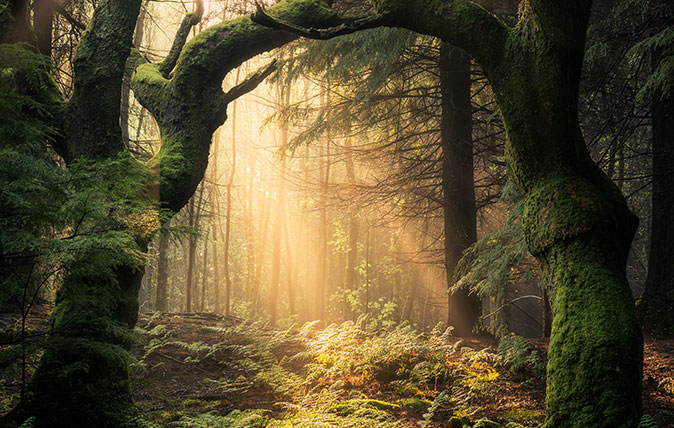

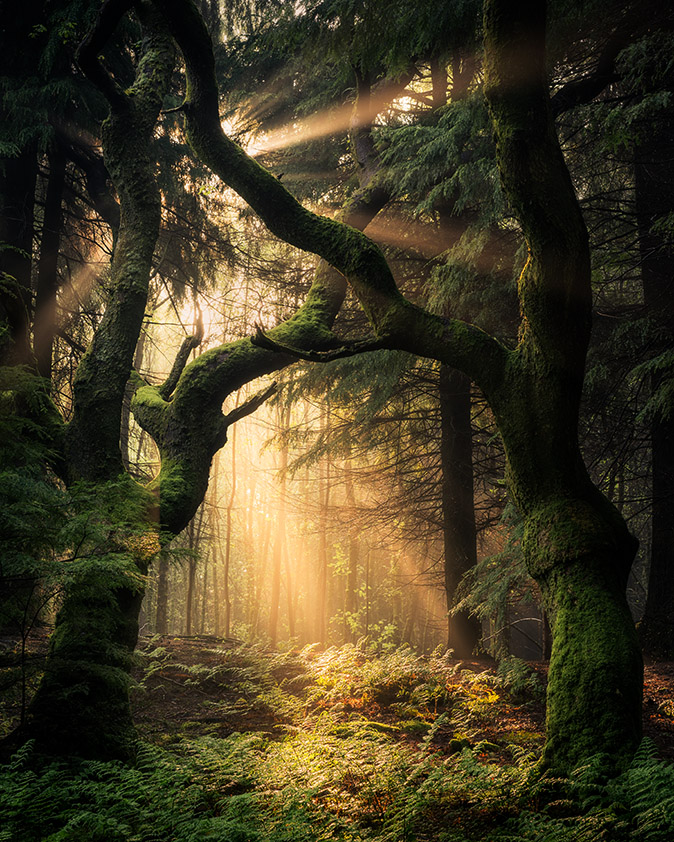
No one else wanted the late-winter wood, so I wood-wandered alone in echoes of my own making.
It was about 5pm, when the sun was declining, when everything that was solid was melting into grey light. Owl-light. Wolf-light. At the top end of the wood, the pigeons clappered into their roosts in the larch. Of the woodland birds, only the robin sang: sad reflective phrases, as if deconstructing a mystery I couldn’t see.
I trod carelessly, a stick cracked. The noise cannoned around the bare trees. From out of the ground, a woodcock tore up and whirred away, banking left, banking right through the beech columns, flying on an instinct perfected down the centuries to escape falcons and men bearing guns.
"It is a modern fallacy that woods should be museums of trees. Woods are to be used and are the better for it."
That woodcock was appropriate, for I was in Cockshutt Wood. What’s in a name? The archaeology of meaning. Shutt is medieval English for ‘shut’ or trapped. Cockshutt Wood is where, centuries ago, woodcock were netted. The birds were here long before me; along with the badgers, they were the original tenants of this three acres of 647 trees (I know, because I counted every one of them) on the hillocky western edge of Herefordshire, where the wind sometimes blows so hard only the old giant oaks keep the landscape pegged down.
It is a modern fallacy that woods should be museums of trees. Woods are to be used and are the better for it. A managed wood is better for wildlife. Cockshutt, aside from providing woodcock for the table, has, down the centuries, supplied alder for charcoal, oak for timber, forage for pigs, holly for sheep fodder, coppiced hazel for hurdles, ash for farm implements. A typical English wood, then.
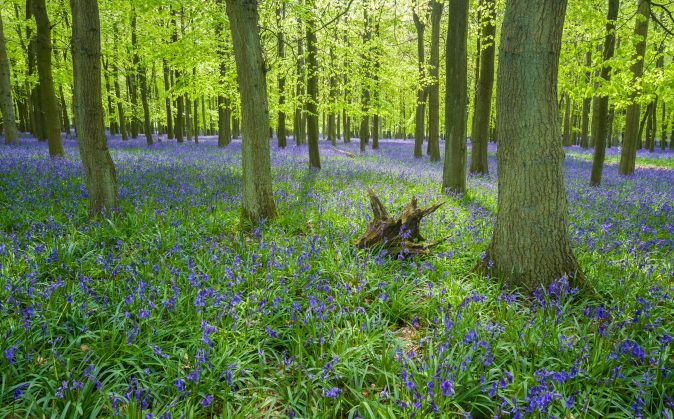
A wood is always in the past tense. There was a slight breeze through the tracery of the silver birch. This, as Samuel Taylor Coleridge noted, is the most beautiful of trees, ‘the Lady of the Woods’, but it’s tough. It was the first tree to colonise Britain after the last Ice Age, so the sound of the wind in the birch’s naked branches was the sound of England’s February 10,000 years ago.
There is music in trees. The breeze in the thin wire branches of birch played cello, yet through the million needles of spruce, it was soft percussion, such as you get with jazz drum brushes. Edward Elgar understood the music of the trees. ‘This is what I hear all day,’ he wrote to his friend August Jaeger. ‘The trees are singing my music – or have I sung theirs?’
Exquisite houses, the beauty of Nature, and how to get the most from your life, straight to your inbox.
I came late to woods and the realisation of such natural wonders. I’m not really a woodsman, although my paternal great-grand-father was the reeve (a fantastically ancient appellation), or manager of woodland, for Bart’s Hospital estate at Aconbury, just over the hill, but then the First World War came and the family were uprooted.
"No one goes to a wood for conviviality – they go for tranquillity. In a wood, you’re safe from prying eyes, just another dark vertical shape among others: a human tree trunk."
I was born into hop farming, meaning a woodless childhood, except for the circ-ular hilltop copse at Withington. As with many scatterings of woodland on farmland, its sole purpose was cover for gamebirds. Kicking through the fallen leaves, my friends and I sought spent, shiny shotgun cartridges, as colourful as exotic birds (except for the orange Eley cartridges, which no one wanted). Collecting shotgun cartridges passed for a hobby in 1970s Herefordshire.
All my other woodland experiences as a child are mere fragments, bark chippings, of memory. One: a school project on the deciduous trees of Haugh Wood, with examples of buds held to the page by Fablon, a transparent sticky plastic, as certain a signifier of the 1970s as Black Forest gâteau and space hoppers. Two: picking bluebells in Nupend Wood. Three: picking wild daffodils in Bent Orchard.
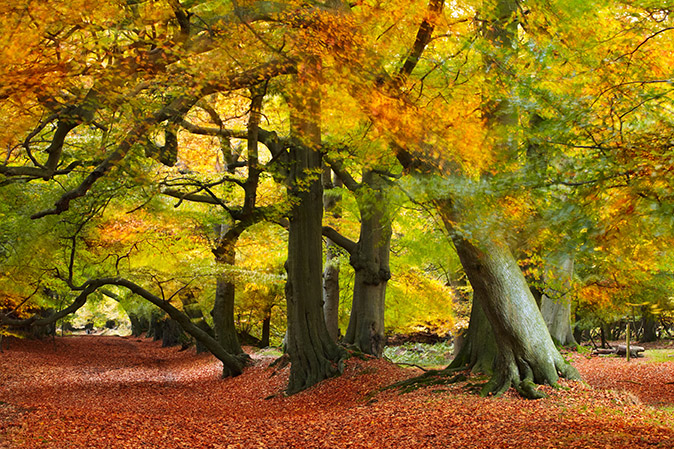
There were trees, however; the Georgian oaks in the parkland at New Court, Lug-wardine, where I learnt to ride a horse; the pear tree on the front lawn with its attached treecreeper; our apple orchard; gathering conkers, with their skins as polished as teak, and the cheats in playing conkers, such as soaking in vinegar, baking in the oven. In a small, but I think honourable, snub to health and safety, I sent my own son to a school where playing conkers was compulsory.
On that winter afternoon, I was glad that no one had wanted to accompany me. No one goes to a wood for conviviality – they go for tranquillity. In a wood, you’re safe from prying eyes, just another dark vertical shape among others: a human tree trunk. I know why woods like Cockshutt are special – in the hurly-burly of 21st-century life, they are sanctuaries for people, but also for many fauna and flora. They are refuges of Nature against the tide of people and agribusiness.
From somewhere in the dingle, a male fox barked: rah, rah, rah. Posh fox barking. It had rained the day before and the smell of rotting wood was as thick as curtains. Sometimes, entering a wood is like entering a parish church – the same ancient silence, the same filtered light, the same musty odour.
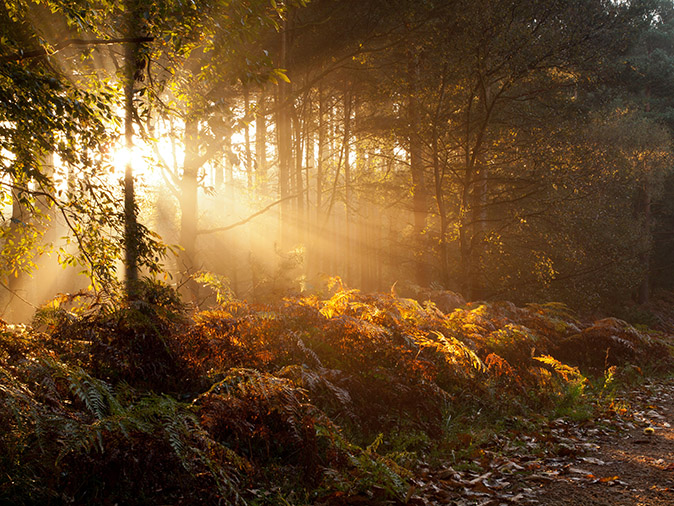
The other way round, of course; entering a parish church is akin to entering a wood. The Gothic architects who made England’s churches drew inspiration from the trees. Look at the beech bearing a heavy branch – under the branch, where it joins the trunk, you’ll see the tree has grown extra, supporting mass. A corbel.
Some fieldfares, disturbed by my passing, flew out of the hazel, clacking irately as they beat away low into the gloom. Very soon, the big thrushes will be making their way north and the summer migrants will arrive. The chiffchaff will be first, on or about March 18, and sit in his familiar tree. His piercing, two-tone chiffchaff song is hardly pretty, yet it is immortal and important – it announces the coming in of spring. How pleased will be the trees, as well as I, to hear him.
"Gathering kindling is one of those occupations that aligns you with all your ancestors, ever. Humans have been utilising wood for warmth for 500,000 years."
Like the other summer warblers, he comes to Cockshutt for the spring thaw of insects. There aren’t many vegetarian birds in a summer wood. In two years, we’ve doubled the number of wood warblers in this small wood, from one pair to two pairs, simply by running the cattle through the trees occasionally. Where there is cow dung, there are insects. Yes, managing woods makes them better for the birds, bees, butterflies and beasts.
It was almost dark when I started on the pale path out of the wood. I’m not an idle countryman and my wood-wandering that winter afternoon had purpose as well as pleasure. I was gathering kindling, both an ancient rite and an ancient right. The saying ‘by hook or by crook’ comes from the Middle Ages, when villagers were allowed to take only dead wood, not cut down trees or bushes. Fallen timber and dead wood could be cleared and pulled out with a shepherd’s crook or a weeding hook.

Wood was the first serious fuel; as I bent to pick twigs and branchlets that afternoon, I was the picture echo of Stone Age man, a medieval farmer, my own grandfather. Gathering kindling is one of those occupations that aligns you with all your ancestors, ever. Humans have been utilising wood for warmth for 500,000 years.
If I came late to woods, I’ve at least learnt the woodsman’s secret. Ash, whether sappy or dry, makes white-hot fire in the hearth.
John Lewis-Stempel is the author of ‘The Wood: The Life & Times of Cockshutt Wood’, a Radio 4 Book of the Week

Credit: Philip Bannister / Country Life
The extraordinary writing which made John Lewis-Stempel Columnist of the Year
Read three of the beautiful, evocative articles which made Country Life's John Lewis-Stempel the Columnist of the Year.
Country Life is unlike any other magazine: the only glossy weekly on the newsstand and the only magazine that has been guest-edited by His Majesty The King not once, but twice. It is a celebration of modern rural life and all its diverse joys and pleasures — that was first published in Queen Victoria's Diamond Jubilee year. Our eclectic mixture of witty and informative content — from the most up-to-date property news and commentary and a coveted glimpse inside some of the UK's best houses and gardens, to gardening, the arts and interior design, written by experts in their field — still cannot be found in print or online, anywhere else.
-
 A simply perfect thatched cottage in Devon, with charm, walled gardens and all the space you need for family life
A simply perfect thatched cottage in Devon, with charm, walled gardens and all the space you need for family lifeThatched cottages are often pretty, but pretty small — but Julie Harding finds one brings which blends cottage charm with the space of a country manor.
-
 How many people pass their driving test first time? Country Life Quiz of the Day, November 13, 2025
How many people pass their driving test first time? Country Life Quiz of the Day, November 13, 2025Test your general knowledge in today's Country Life quiz.
